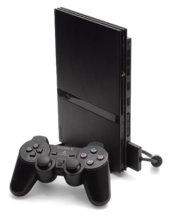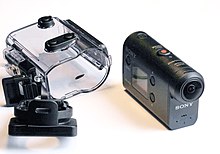Founding and early history
Main article: Moody's Corporation
Moody's traces its history back to two publishing companies established by John Moody, the inventor of modern bond credit ratings. In 1900, Moody published his first market assessment, called Moody's Manual of Industrial and Miscellaneous Securities, and established John Moody & Company.[5]
The publication provided detailed statistics relating to stocks and
bonds of financial institutions, government agencies, manufacturing,
mining, utilities, and food companies. It experienced early success,
selling out its first print run in its first two months. By 1903, Moody's Manual was a nationally recognized publication.[10] Moody was forced to sell his business, due to a shortage of capital, when the 1907 financial crisis fueled several changes in the markets.[11]Moody returned in 1909 with a new publication focused solely on railroad bonds, Analysis of Railroad Investments,[3][12] and a new company, Moody's Analyses Publishing Company.[5] While Moody acknowledged that the concept of bond ratings "was not entirely original" with him—he credited early bond rating efforts in Vienna and Berlin as inspiration—he was the first to publish them widely, in an accessible format.[5][11][13] Moody was also the first to charge subscription fees to investors.[12] In 1913 he expanded the manual's focus to include industrial firms and utilities; the new Moody's Manual offered ratings of public securities, indicated by a letter-rating system borrowed from mercantile credit-reporting firms. The following year, Moody incorporated the company as Moody's Investors Service.[10] Other rating companies followed over the next few years, including the antecedents of the "Big Three" credit rating agencies: Poor's in 1916, Standard Statistics Company in 1922,[5] and the Fitch Publishing Company in 1924.[3]
Moody’s expanded its focus to include ratings for U.S. state and local government bonds in 1919[11] and, by 1924, Moody's rated nearly the entire U.S. bond market.[10]
1930s to mid-century
Main article: Moody's Corporation
The relationship between the U.S. bond market and rating agencies
developed further in the 1930s. As the market grew beyond that of
traditional investment banking institutions, new investors again called
for increased transparency, leading to the passage of new, mandatory
disclosure laws for issuers, and the creation of the Securities and Exchange Commission (SEC).[11]
In 1936 a new set of laws were introduced, prohibiting banks from
investing in "speculative investment securities" ("junk bonds", in
modern terminology) as determined by "recognized rating manuals". Banks
were permitted only to hold "investment grade" bonds, following the
judgment of Moody's, along with Standard, Poor's and Fitch. In the
decades that followed, state insurance regulators approved similar
requirements.[3]In 1962, Moody's Investors Service was bought by Dun & Bradstreet, a firm engaged in the related field of credit reporting, although they continued to operate largely as independent companies.[11]
1970s to 2000
In the late 1960s and 1970s, commercial paper and bank deposits began to be rated. As well, the major agencies began charging the issuers of bonds as well as investors — Moody's began doing this in 1970[5] — thanks in part to a growing free rider problem related to the increasing availability of inexpensive photocopy machines,[14] and the increased complexity of the financial markets.[10][15] Rating agencies also grew in size as the number of issuers grew,[16] both in the United States and abroad, making the credit rating business significantly more profitable. In 2005 Moody's estimated that 90% of credit rating agency revenues came from issuer fees.[17]The end of the Bretton Woods system in 1971 led to the liberalization of financial regulations, and the global expansion of capital markets in the 1970s and 1980s.[5] In 1975, the SEC changed its minimum capital requirements for broker-dealers, using bond ratings as a measurement. Moody's and nine other agencies (later five, due to consolidation) were identified by the SEC as "nationally recognized statistical ratings organizations" (NRSROs) for broker-dealers to use in meeting these requirements.[3][18]
The 1980s and beyond saw the global capital market expand; Moody's opened its first overseas offices in Japan in 1985, followed by offices in the United Kingdom in 1986, France in 1988, Germany in 1991, Hong Kong in 1994, India in 1998 and China in 2001.[5] The number of bonds rated by Moody's and the Big Three agencies grew substantially as well. As of 1997, Moody's was rating about $5 trillion in securities from 20,000 U.S. and 1,200 non-U.S. issuers.[12] The 1990s and 2000s were also a time of increased scrutiny, as Moody's was sued by unhappy issuers and investigation by the U.S. Department of Justice,[19] as well as criticism following the collapse of Enron, the U.S. subprime mortgage crisis and subsequent late-2000s financial crisis.[5][20]
Following several years of rumors and pressure from institutional shareholders,[21] in December 1999 Moody's parent Dun & Bradstreet announced it would spin off Moody's Investors Service into a separate publicly traded company. Although Moody's had fewer than 1,500 employees in its division, it represented about 51% of Dun & Bradstreet profits in the year before the announcement.[22] The spin-off was completed on September 30, 2000,[23] and, in the half decade that followed, the value of Moody's shares improved by more than 300%.[12]
Structured finance boom and after
Structured finance went from 28% of Moody's revenue in 1998 to almost 50% in 2007, and "accounted for pretty much all of Moody's growth" during that time.[24] According to the Financial Crisis Inquiry Report, during the years 2005, 2006, and 2007, rating of structured finance products such as mortgage-backed securities made up close to half of Moody’s rating revenues. From 2000 to 2007, revenues from rating structured financial instruments increased more than fourfold.[25] However, there was some question about the models Moody's used to give structured products high ratings. In June 2005, shortly before the subprime mortgage crisis, Moody’s updated its approach for estimating default correlation of non-prime/nontraditional mortgages involved in structured financial products like mortgage-backed securities and Collateralized debt obligations. Its new model was based on trends from the previous 20 years, during which time housing prices had been rising, mortgage delinquencies very low, and nontraditional mortgage products a very small niche of the market.[26]On July 10, 2007, in "an unprecedented move", Moody's downgraded 399 subprime mortgage-backed securities that had been issued the year before. Three months later, it downgraded another 2506 tranches ($33.4 billion). By the end of the crisis, Moody's downgraded 83% of all the 2006 Aaa mortgage backed security tranches and all of the Baa tranches.[27][28]
In June 2013, Moody's Investor Service has warned that Thailand's credit rating may be damaged due to an increasingly costly rice-pledging scheme which lost 200 billion baht ($6.5 billion) in 2011–2012.[29]



